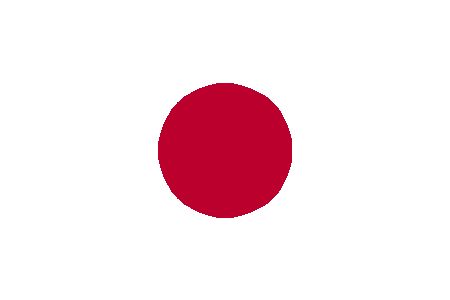JAPAN - Enablement requirement of essential patent for blue LED confirmed
ABE & Partners
Osaka
Takanori Abe
Since it was invented by Thomas Edison in 1879, the incandescent filament lamp had played the leading part in the illumination field for more than a century. However, in the 1990s, Nichia Corporation made a breakthrough by succeeding in the practical use and mass-production of blue LED for the first time in the world and achieved a paradigm shift in the illumination field by the practical use and mass- production of white LED. This case is about the essential patent for the blue LED.
The invention
Nichia’s invention is regarding nitride semiconductor light emitting element (JP2780691). The purpose of the invention is to provide not only a green LED but also a nitride semiconductor light emitting element which emits light of wavelengths of360nm or above and is high in brightness and output power.
JPO
Everlight electronics, a Taiwanese corporation, filed a trial for patent invalidation against Nichia’s patent. The Japan Patent Office (JPO) found that the invention is regarding nitride semiconductor light emitting element comprising an n-type nitride semiconductor layer provided in contact with first main surface of the active layer comprising InxGal-xN where 0<x< 1; a p-type nitride semiconductor layer provided in contact with second main surface of the active layer compris- ingAlyGal-yN where 0<y< 1; whereby it is made to emit light of lower energy than the intrinsic band gap energy of nitride semiconductor which forms the active layer.
The JPO determined that the patent does not satisfy the enablement requirement because the statement “it is made to emit light of lower energy than the intrinsic band gap energy of nitride semiconductor which forms the active layer’ is not clear and sufficient as to enable a person skilled in the art to work the invention.
Nichia appealed to the IP High Court seeking rescission of the JPO’s decision. Our firm represented Nichia.
IP High Court
In the judgment of September 24 2014, the IP High Court (Presiding Judge Tomita), accepting almost all of Nichia’s arguments, held as follows and rescinded the JPO's decision:
1) Error in finding the gist of the invention
The JPO found that the invention as being a three-layered structure comprising p-type AlGaN layer, active layer, and n-type InGaN layer, and determined whether the enablement requirement is satisfied. However, according to the corrected claim 1, the invention is a four-layered structure comprising p-type AlGaN layer, active layer, n-type InGaN layer, and n-type AlGaN layer. Thus, the JPO made an error in finding the gist of the invention when determining the enablement requirement.
The JPO described the gist of the invention following the corrected claim 1 and thereafter determined the characteristic structure as “nitride semiconductor light emitting element comprising n-type InGaN layer in contact with first main surface of the active layer, p-type AlGaN layer in contact with second main surface of the active layer, whereby it is made to emit light oflower energy than the intrinsic band gap energy of nitride semiconductor which forms the active layer”. However, “second n-type nitride semiconductor layer comprising AlaGal-aN where 0 S a< 1 in contact with n-type nitride semiconductor layer’ is a characteristic structure of the invention. The JPO made an error in excluding the above structure from the characteristic structure.
2) Error in the judgment of enablement requirement
Example 4 of the patent shows the manufacturing method of the LED element consisting of a four-layered structure comprising p-type AlGaN layer, active layer, n-type InGaN layer, and n-type AlGaN layer. Example 4 also describes that this LED element emits light of lower energy than the intrinsic hand gap energy of nitride semiconductor which forms the active layer. Therefore, the patent satisfies the enablement requirement.
Everlight argued that in the patent the emission peak wavelength of the intrinsic band gap energy of Ino.osGao.9sN active layer is around 380nm and LED element in example 1 has longer wavelength of 41 Onm whereas in another Nichia patent the emission peak wavelength of the intrinsic band gap energy oflnoaGaasN active layer is 51 Onm as is stated in example 2 and LED element in example 6 has shorter wavelength of450nm, that these contradict each other, and therefore the invention is not enabled when comparing example 4 of the patent with Nichia’s other patent.
However, the comparison in the patent is to compare the emission peak wavelength of LED elements where both active layers are single quantum well structure whereas the comparison in Nichia’s other patent is to compare the emission peak wavelength of LED element whose active layer is not quantum well structure (example 2) and that of LED element whose active layer is single quantum well structure (example 6). Thus, Nichia’s other patent’s description does not necessarily contradict the patent.
Everlight argued that the band gap en- ergy equation in the patent is incorrect and therefore the invention is not enabled. However, the wavelength is based on the experimental result of actual manufacturing of the LED element. Thus, incorrect equation does not matter.
The IP High Court rescinded the JPOs decision. After this judgment, the JPO decided to maintain the validity of the patent.
Practical tips
Error in finding the gist of the invention is one of the appeal grounds to the IP High Court. However it is said that it is almost impossible for such an appeal ground be successful. This case is a rare case where it became successful. One may not usually assess this ground due to the low possibility. However, it is important to assess whether the JPOs finding of the gist of the invention is correct when reviewing the JPO s decision.
